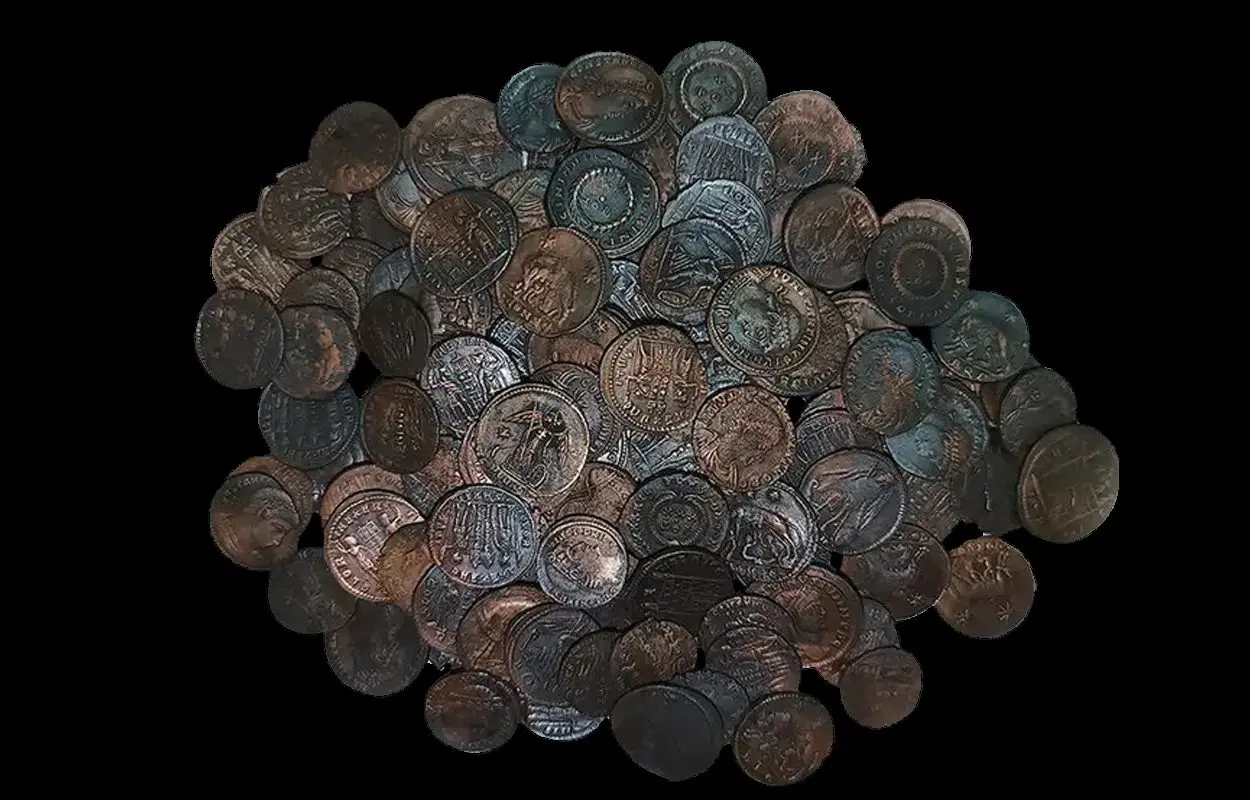Divers have discovered between 30,000 and 50,000 Roman coins in the sea near the northeast coast of Sardinia.
The coins date from the early 4th century AD and are mainly a bronze follis type made in the Roman tradition.
The term “follis” in Latin refers to a bag, typically crafted from leather, and historical records suggest that in ancient times the term was employed to describe a sealed pouch holding a quantity of currency.
Follis coins were introduced around the time of the Edict on Maximum Prices, a coinage reform by Diocletian to stabilise the coinage of the Roman Empire which had been debased by the numerous emperors and usurpers who minted their own coins.
In an announcement by the Italian Ministry of Culture, the discovery was made by divers in the shallows near the Sardinian coast, who notified authorities from the Superintendency of Archaeology and the Carabineros.
An estimate based on the total weight suggests that the bronze coins number between 30,000 and 50,000, which have been described as being “in an exceptional and rare state of conservation”. A chronological analysis places the timeline of the coins to between AD 324 (coinage of Licinius), and AD 340 (coinage of Constantine the Great).
“The restoration and conservation operations of the coins and materials found will allow us to expand and deepen our knowledge of the context of the finds from which a lot of information can still be extracted,” the ministry explained.
According to the head of the Italian Directorate of Archaeology, Luigi La Rocca: “The treasure represents one of the most important numismatic discoveries in recent years and highlights once again the richness and importance of the archaeological heritage that hides in the depths of our seas”.
Header Image Credit : Italian Ministry of Culture







